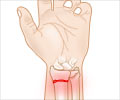A new study in Sports Medicine found high school male and female soccer players returning to play after a recent concussion or any prior lifetime concussions had a higher risk of leg injuries compared to those who never had concussions.

‘Young athletes who had a concussion or a head injury in the past 12 months or sometime in their prior lifetime could have ongoing neuromuscular and neurocognitive problems that can increase their risk of further injury when they return to play.’





Previous sport-related concussion research has found increased risk of subsequent lower extremity injury in collegiate and professional athletes. But there has been limited study of this potential injury risk in youth athletes. “This prospective study of high school soccer players is consistent with research in older athletic populations and suggests risk of lower extremity injury is increased after return to play from concussion,” Dr. Brooks said.
Dr. Brooks and her research team studied a group of male and female soccer high school players from 52 different high schools over the course of an entire year. The athletes completed pre-season baseline questionnaires to understand their concussion history, and were then monitored by Licensed Athletic Trainers during the season.
The study found that athletes reporting concussions in past 12 months or any prior lifetime concussions had 85% higher risk of leg injuries during the season compared to athletes without a history of concussions.
This important study suggests that adolescent athletes with a concussion history may have ongoing neuromuscular and neurocognitive issues that can increase their risk of injury, though these factors are not identified with current clinical post-concussion testing.
Advertisement
The 2018 conference brings more than 2,000 sports medicine physicians together from throughout the United States and around the world. The meeting theme is REACH: Reaching Up, Reaching Out, Reaching Ahead and explores the many ways AMSSM is leading the charge and shaping the future of sports medicine.
Advertisement














